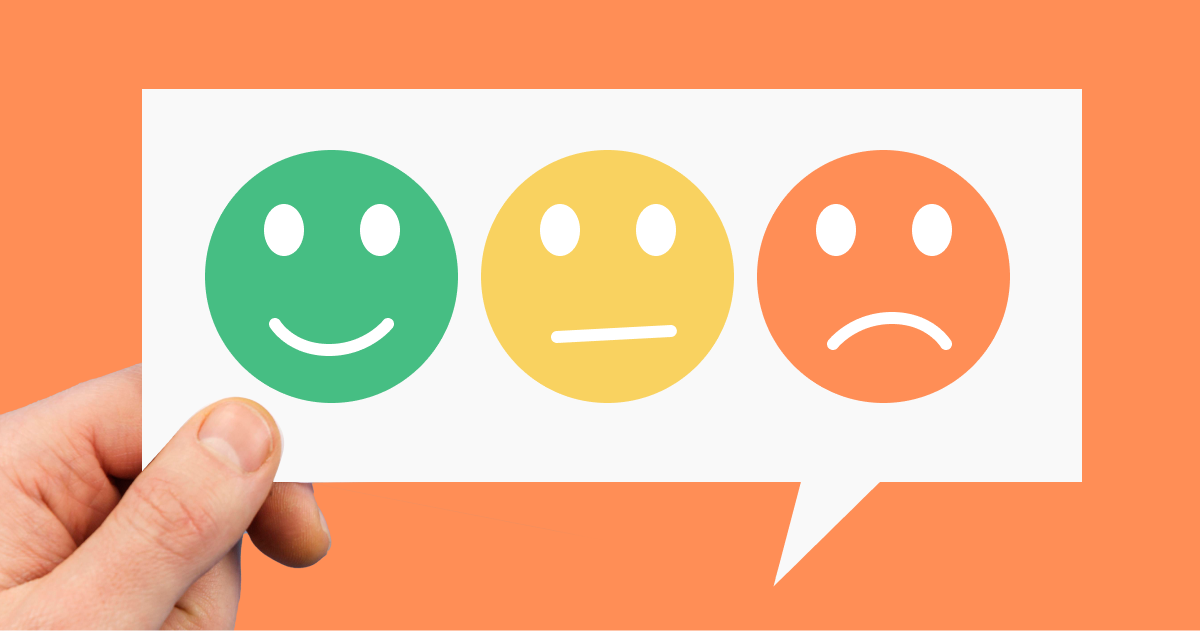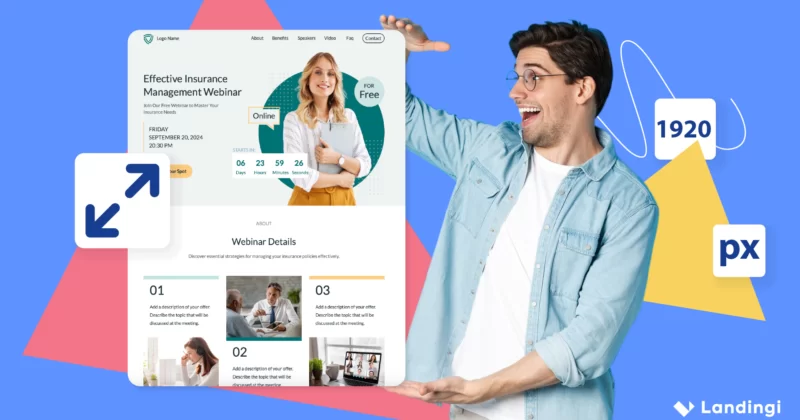In today’s digital era, businesses need to ensure seamless customer experiences across all channels. Omnichannel customer journey mapping is a crucial tool for reaching this objective. Businesses may uncover pain areas, ensure better interactions, produce a consistent customer experience, decrease the abandoned shopping carts rate, and improve other KPIs by recognizing every touchpoint in the customer journey.
In this comprehensive guide, we’ll discuss the significance of omnichannel customer journey mapping and offer a step-by-step process for making one. We’ll provide you with the knowledge and skills business owners and marketing specialists require to improve the customer experience and raise satisfaction.
Use as Smart Sections para trabalhar de forma inteligente em várias landing pages ao mesmo tempo e esqueça as tediosas revisões manuais! Uma maneira simples de gerenciar alterações em massa.
Omnichannel Customer Journey Maps Explained
An omnichannel customer journey map visually depicts a customer’s interactions with a brand across all touchpoints, channels, and devices. It presents a comprehensive picture of the customer journey, taking into account both online and offline encounters and emphasizing the possibilities, challenges, and crucial moments that might have an influence on customer satisfaction.
Understanding your potential lead or customer will help you drop the rate of abandoned shopping carts and increase the number of valuable leads.
To create an efficient omnichannel customer journey map, businesses need to collect information on consumer interactions across all channels, including social media, websites, mobile applications, email, and in-store encounters. This data has to be thoroughly examined to identify recurring trends and patterns that can assist in extensive map creation.
The map should be done with the customer’s needs, preferences, and habits in mind. All the stages of the customer journey, from awareness to loyalty, should be considered, and important touchpoints that might affect the customer experience should be identified.
Once the map has been made, it may be utilized to pinpoint problem areas and establish plans for enhancing the client experience. Businesses may use the map, for instance, to identify the precise touchpoints where a client is having trouble making an online purchase and come up with ways to streamline the procedure.
Get 111 Landing Page Examples—The Ultimate Guide for FREE
Why Should You Adhere to a Customer Journey Omnichannel Model?
By offering a smooth and customized consumer experience across all channels, the omnichannel model may help companies stay competitive in today’s digital environment. Here are some further arguments in favor of using the omnichannel strategy.
- Improved customer experience: Businesses may offer a smooth customer experience across all channels, including social media, email, chat, phone, and in-store, by employing an omnichannel approach. This might raise loyalty and boost customer satisfaction.
- Better engagement: an omnichannel strategy allows organizations to interact with consumers at every touchpoint, resulting in increased possibilities for contact and the development of stronger relationships.
- Higher conversion rates: Companies may boost conversion rates and lower customer turnover by giving customers a unified, tailored experience across all channels.
- Better data insights: By using an omnichannel strategy, organizations may gather data from many sources and better understand the behavior, preferences, and pain points of their customers. This can enhance overall business performance and provide information for future marketing tactics.
- Enhanced operational effectiveness: By integrating data, procedures, and technology across all channels, an omnichannel strategy may assist companies in streamlining their operations and lowering costs.
Omnichannel Customer Journey Mapping Step-By-Step
Finding your major target customer categories and channels is generally the first step in the omnichannel customer journey mapping process. Determine the stages of the journey, which may include awareness, deliberation, purchase, post-purchase, and advocacy. Consider the exact areas you want to concentrate on and the precise results you wish to attain. This will keep you on task and help you maintain your attention. Other steps of the omnichannel journey mapping process are the following:
Identifying the Touchpoints and Micro-Conversions
Determine little actions that help website visitors achieve a bigger objective (like making a purchase). Micro-conversions are potent predictors of user engagement, purchase intent, and sales funnel performance, even if they often do not contribute to a website’s total conversion rate.
List all the touchpoints where customers may interact with your brand for each channel. Examples of touchpoints include a website visit, email opening, placing an order, getting a confirmation message, and other actions. Sort each touchpoint according to the phase of the customer journey it takes place in. For instance, a confirmation letter serves as a post-purchase touchpoint, whereas an email newsletter is an awareness touchpoint.
Then evaluate each touchpoint based on how well it satisfies the requirements and expectations of the consumer. Determine the shortcomings of the touchpoints and possibilities to enhance the customer experience.

Gathering Customer Data
Gather information on consumer behavior and input from all online and offline touchpoints, including social media, email, phone, in-store, and chatbots. After gathering information from each touchpoint, arrange it in a way it is simple to interpret and visualize. Spreadsheets and customer journey mapping software are tools you may use to do this. Analyze the obtained data to find patterns, gaps, and pain points throughout the customer journey.
Creating Personas
Based on the data analysis, create customer personas that depict the various client base groups. Analyze the patterns in the information you have gathered. Group your consumers according to any shared traits they may have.
Once you have determined the traits that each group shares, make up fake customer profiles to represent each one. Give each persona a name, age, occupation, list of hobbies, and other pertinent details. Make the identities as specific as you can.
Use your established personas to guide your product development and marketing efforts. Ask yourself questions like “How would this persona react to this product?” “What channels would this persona use to find information?” or “What drives this persona to make a purchase?”
Focus on the user – before starting your campaign, ensure that the content reflects your potential clients’ needs.
Identifying Pain Points and Opportunities
Examine the customer journey map to find problems, obstacles, and areas that may be improved. Keep an eye out for points in the customer journey where your consumers are having trouble, running into roadblocks, or getting frustrated. The product characteristics, customer service, or delivery timeframes may be the source of these problems.
Look for opportunities to improve the customer experience. These possibilities can involve delivering tailored advice, enhancing communication, or providing further services.
Prioritize the discovered opportunities and pain points in accordance with how they will affect your company’s objectives and the client experience.
Implementing Changes and Monitoring Progress
You’ll need to create a plan to improve all the weak points, solve the problems customers face, and use all the opportunities. You can use a template action plan to get started if necessary. To ensure that your customer journey mapping and action plan stays applicable and efficient in achieving your company objectives, continually examine and update it.
Customer Journey Mapping Best Practices
Understanding the mapping process is crucial, but looking for additional solutions is still imperative to make the process easier and more efficient. Here are some valuable tips worth paying attention to.
Employ the Relevant Tools
Use digital technologies to streamline the omnichannel customer journey mapping process. Here are a few examples:
- Customer Journey Mapping Software: These products make planning out customer journeys simpler and more logical by offering drag-and-drop interfaces, pre-built templates, and other capabilities. Software for charting the customer journey includes Touchpoint Dashboard, Smaply, and CX Journey.
- Analytics Tools: Data regarding consumer behavior and interactions across many channels may be gathered using analytics tools. When utilized to identify pain points and potential improvement areas, these tools can offer insights into how customers interact with a company at various stages of their journey. Google Analytics, Mixpanel, and Kissmetrics are a few well-known analytics programs.
- CRM Systems: To keep track of client interactions across various channels and touchpoints, customer relationship management (CRM) systems are utilized. Such tools help personalize customer interactions by gathering data on consumer preferences, previous purchases, and other important data points. Among the popular CRM systems are Salesforce, HubSpot, and Zoho.
- Social media listening: Such technologies may be used to track what clients say about a company on social media platforms. Businesses may use this to pinpoint areas where their customer experience could be enhanced and respond instantly to consumer complaints and feedback. Sprout Social, Brandwatch, and Hootsuite are a few known social media listening apps.
- User testing: Utilizing testing technologies, businesses may learn from actual customers about their interactions with their goods and services. Surveys, focus groups, and other kinds of user testing might fall under this category. User testing may offer insightful information on how customers interact with a company through various channels and touchpoints. Optimal Workshop, UserTesting, and UsabilityHub are well-liked user-testing software programs.
Head to the Integration Catalog to browse in-app, compatible, and Zapier integrations with Landingi.
Integration and automation tools will optimize your workflow and make it easier to manage data from various sources in one place.
Always Ask for a Customer Feedback
Your decision-making process should be guided and informed by customer feedback if you want to innovate and make improvements to your product or service. It brings wonderful possibilities that can aid in enhancing the omnichannel consumer experience.
Providing customers with a simple option of leaving feedback is essential for exceptional customer service. Thanks to the omnichannel strategy, brands can interact with customers through any channel and get feedback at each point of contact. There are several ways to get client feedback, including through websites, social media, emails, in-app surveys, and reviews. The information obtained will help you keep your strategy flawless.

Offer Self Service
Providing customers with self-service choices is another lucrative strategy, capable of enhancing the whole brand experience. One of the most crucial aspects of the customer experience is reaction speed. Customers need prompt responses to their inquiries. Through self-service portals, they may instantly access information, which also helps businesses save time and resources. Businesses can provide how-to videos, manuals, and tutorials to assist consumers in resolving their issues on their own.
Final Word
Finally, omnichannel customer journey mapping is crucial for companies to comprehend customers’ experiences across all touchpoints and enhance their journey. Businesses may uncover issues and opportunities for optimization and customize their marketing strategies by developing a comprehensive perspective of the customer’s interactions.
In contrast to organizations with weak omnichannel strategies, which only keep 33% of their customers, companies with effective omnichannel customer engagement strategies have an average of 89% client retention. These figures show what a big difference omnichannel customer journey mapping can make to a company’s bottom line.
Businesses may enhance customer experience, better understand consumer wants and preferences, and ultimately increase revenue by utilizing omnichannel customer journey mapping.








